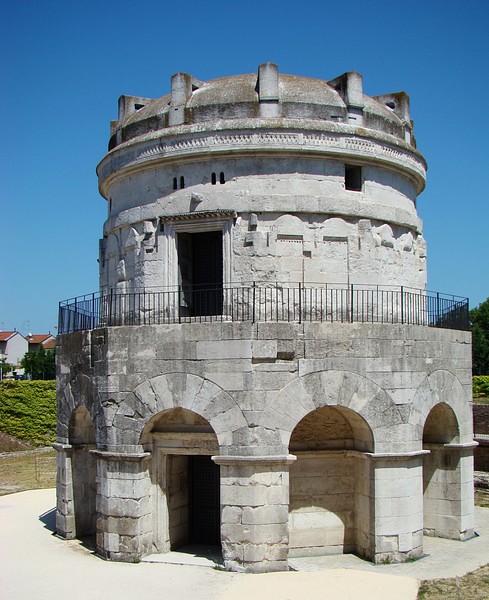
The Ostrogoths were the eastern tribe of the Goths (a Germanic people) who rose in power in the area north of the Black Sea. The designation, Ostrogoth, taken to mean 'Eastern Goth', actually means 'Goths glorified by the rising sun' and was coined at the same time as the term Visigoth (interpreted to mean 'Western Goth') by the Roman writer Cassiodorus (l. c. 485 - c. 585 CE) to differentiate between two distinct populations of Goths. The Ostrogoths seem to have originally been known as the Greuthungi (also given as Greutungi), as referenced by the 4th-century CE Roman historian Ammianus Marcellinus and the 6th-century CE Gothic historian Jordanes.
Cassiodorus lived among the Ostrogoths and served their king Theodoric the Great (r. 493-526 CE). In an attempt to simplify the designation between the Germanic tribes which had moved toward the west, and those who remained in the east, Cassiodorus, deliberately or mistakenly, interpreted 'Ostrogoth' to mean `Eastern Goths' and the others then became 'Western Goths', but the people themselves did not think of themselves along those lines. The Visigoths would, in time, accept and apply that term to themselves and the Ostrogoths had long known themselves by that name but neither tribe would have considered themselves 'eastern' or 'western' Goths.
The Goths first appear in history living in the area around the Black Sea. They made constant incursions against the provinces of Rome and proved a resilient and perpetual nuisance to the Empire until the invasion of the Huns in 375 CE. A large portion of the populace (according to some sources, 200,000) fled the area to seek the protection of the Roman Empire under the emperor Valens (r. 364-378 CE) and these people became known as the Visigoths. The rest of the people remained, enduring the rule of the Huns, but retaining a certain degree of autonomy.
After the death of Attila the Hun in 453 CE and the dissolution of his empire, the Ostrogoths declared their independence. Eventually, under Theodoric the Great, they migrated and settled in Italy. Theodoric established the Ostrogothic Empire but his successors came into conflict with the Byzantine Empire which sent the general Flavius Belisarius (l. 505-565 CE) to bring the Goths back in line in accordance with Byzantine interests. The last great Gothic king Totila (r. 541-552 CE) led the Goth resistance against the Byzantines and, after his death in 553 CE, the Ostrogoths lost their autonomy and ethnic identity, merging with the people of Italy, the Lombards, and dispersing into the regions of modern-day France and Germany.
Origin & Identity
The Goths – those who would eventually be known as Ostrogoths and Visigoths – probably originated around the area of Gdansk, Poland before they began migrating to the regions of modern-day Germany and Hungary. This claim for a point of origin, however, is highly contested with scholars such as Peter Heather arguing in favor of it and others, such as Michael Kulikowski, against.
The difficulty in establishing a point of origin and cultural identity for the Goths is that they had no written history prior to their engagement with Rome. All that is known of the Goths comes from the Roman writers (except, of course, for physical evidence brought to light by modern archaeology). Scholars like Kulikowski and Walter A. Goffart point out that, since nothing can be known for certain of Goth history prior to the Roman historians, any claims regarding origins and ethnic identity – apart from the claims of those historians – is merely speculation. These scholars have also claimed, with good reason, that narratives built on physical evidence are still speculative because that evidence is interpreted in light of a pre-existing scholarly narrative, not objectively.
In other words, these scholars claim, archaeologists who interpret finds such as the 3,000 Gothic tombs in Eastern Pomerania, Poland (the so-called Wielbark Culture discovered in 1873 CE), tend to understand the evidence in light of Jordanes' 6th-century CE work Getica, a history of the Goths, and ignore other possibilities. The claim that the Wielbark Culture discovery “proves” a point of origin for the Goths, then, is untenable because it is just as likely that the area excavated was a Goth settlement established after they had left their earlier homeland.
Peter Heather and others argue that Jordanes' work – even though it makes ample use of mythology and legend – still provides enough historical fact to be of use. Further, since Jordanes' Getica was based on Cassiodorus' earlier work, and Cassiodorus knew the history of the Goths first-hand as a writer in Theodoric's court, more consideration should be given to Jordanes' work and it should not simply be dismissed because the author felt the need to enlarge his narrative at points with fantastic mythological events.
Heather claims that the Goths should not be understood as a single ethnic group but, rather, a confederation of people who shared the same interests and goals and were roughly of the same or similar background. They were not necessarily, Heather claims, a single, unbroken ethnic block who believed, behaved, and lived the same way from their time in Poland until they enter Roman history. The early Goths could have been quite different from those known later to the Roman historians. Heather writes:
A basic vision of closed, biologically self-reproducing groups moving untouched about the map of Europe, each with their own distinct cultures, does no justice either to the evidence, or to the complexities of observable human behavior explored in a variety of comparative contexts…modern general treatments of identity in the migration period have naturally tended to emphasize that it was fluid, subject to individual choice, and at least potentially multiple. (Barnish & Marazzi, 55)
Put simply, Heather claims that the “original Goths” would have interacted with other tribes during their migration – intermarrying and assimilating aspects of different peoples – and so their “Gothicness” would not be a matter of ethnicity so much as shared interests. Heather emphasizes that there were “plenty of non-Goths incorporated at different times into Theodoric's following” and this supports the claim that “Goths” were probably a confederation, not a people, long before Theodoric's reign (Barnish & Marazzi, 57).
Whether the Goths were a singular people or a coalition continues to be debated. What is agreed on is that, based on the works of the Roman historians, the Goths appeared near the boundaries of the Roman Empire in the 3rd century CE and launched their first military incursion against Rome in 238 CE. Afterwards, the Goths appear regularly in Roman history both as antagonists and as mercenaries in the Roman army.
Visigoths, Ostrogoths, & Huns
The Goths who interacted most closely with Rome were the Visigoths. The Ostrogoths remained in the east in the region of Hungary. When Attila the Hun (r. 434-453 CE) came to power, he took Ostrogoth land and added it to his growing territory. The Visigoths were dispersed by the Hunnic invasions and driven into Roman lands but the Ostrogoths continued to remain where they had been.
With the death of Attila in 453 CE, the Ostrogoths declared their independence and joined with another Germanic tribe, the Gepids, under their leader Ardaric (l. c. 450s CE). At the Battle of Nedao in 454 CE, The Gepids under Ardaric defeated Attila's sons with the support of the Ostrogoths (although precisely how the Ostrogoths contributed to the victory is unclear) and the former vassals of Attila's empire were free and settled in Pannonia.
The Ostrogoths were led at this time by the king Valamir (l. c. 420-469 CE) who, like Ardaric, had been one of Attila's generals. Valamir's Ostrogoths continued the policies of Attila in raiding Roman territories and exacting protection money. In 459 CE, he raided Illyricum and then demanded 300 pounds of gold in annual tribute from emperor Leo I (r. 457-474 CE) of the Eastern Empire to keep him from doing so again. Valamir died in 469 CE after being thrown from his horse and he was succeeded by Widimir (l. 460s CE) and then by Theodemir (d. 474 CE), father of Theodoric the Great. Theodemir made peace with Rome and young Theodoric was sent to Constantinople as a hostage to ensure compliance. The prince was treated well in the city and was educated in Graeco-Roman values at court.
Theodoric & His Successors
In 474 CE, Theodoric (known as Theodoric the Great) became king of the Ostrogoths and was a champion of the emperor Zeno (r. 474-475, 476-491 CE) but was also a threat due to his popularity and martial skills. Theodoric wanted land for his people, and Zeno was not interested in giving him any but, at the same time, understood he had to do something before Theodoric simply took what he wanted. Zeno found a way to solve two of his problems at once: he would send Theodoric to Italy to remove the king Odoacer (r. 476-493 CE) who had been causing Zeno problems and could then take whatever land he wanted afterwards.
Between 488-493 CE, supported by the Byzantine Empire, Theodoric conquered Italy. Theodoric defeated Odoacer, pretended to offer terms of peace, and then killed him, establishing, the Ostrogothic Empire in 493 CE which would stretch from Sicily, through Italy, to France and parts of modern-day Spain. Under Theodoric, the empire flourished and Roman art, literature, and culture were embraced. Although his campaign had been funded by the Byzantines, Theodoric ruled his empire independently and maintained friendly relations with the Empire.
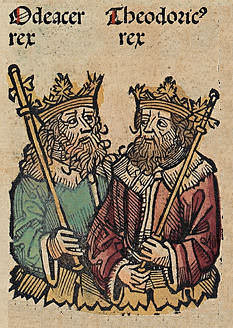
He mandated religious tolerance to pacify frictions between the people of Italy, who were mostly Nicene Christians, and the Ostrogoths who adhered to Arian Christianity. He repaired the damage caused by the wars of 488-493 CE, replanting forests and restoring cities as well as enlarging irrigation ditches and encouraging cultivation of the lands. All of his subjects were considered equal under the law, and his taxation program was applied at the same rate for all. Having established himself as a great king, he felt he needed an illustrious past to legitimize his rule and this is when he commissioned his chief scribe Cassiodorus to write the history of the Goths.
Theodoric encouraged education and literacy among the people as well as among those closest to him - the philosopher Boethius (l. 480-524 CE), famous for his Consolation of Philosophy, was a member of Theodoric's court – and created employment programs which not only improved towns and cities but provided opportunities for work. Under Theodoric, Italy and the other regions of his empire flourished but this prosperity would not survive his reign.
After Theodoric's death in 526 CE, his daughter Amalasuntha (l. c. 495-535 CE), ruled as regent for her son Athalaric and, after his death in 534 CE, she became queen. Amalasuntha was an able administrator, advancing the same Graeco-Roman values as her father, but was not named heir to the throne and needed to legitimize her position. She sent to Justinian I (r. 527-565 CE) asking for assistance in consolidating her rule, possibly fearing a coup by one of her courtiers.
When she did not hear back from Justinian I in a timely fashion, she invited her cousin, Theodahad (d. 536 CE), to rule with her jointly. Trusting Theodahad was a tragic mistake on her part, however, as he believed he was the rightful heir to the throne and had Amalasuntha assassinated in 535 CE. Her son-in-law, Witigis (also given as Vitiges, r. 536-540 CE) then assassinated Theodahad and was crowned king in 536 CE.
The Ostrogothic Wars
Witigis was a weak king whose tax officials (known as the logothetes) raised taxes and pocketed most of the money for themselves. Especially notorious was a logothete known as Alexander the Scissors (so-called because he was considered so greedy he could shave a gold coin so skillfully that the treasury would never notice). The Ostrogoths in the military received lower pay than others, a lack of opportunity for promotion, and pensions for veterans were not paid. Unemployment was rampant, and the people began to stir up revolt against a government which was supported by the Byzantine Empire.
The brewing trouble in Italy frustrated Justinian I who sent the famous general Flavius Belisarius to Italy to bring the region back into line with the empire. Belisarius took Sicily in 535 CE and Naples, then Rome, in 536 CE. In 540 CE, Belisarius took Ravenna and captured Witigis. Justinian I then offered the defeated Ostrogoths his terms, through Belisarius (terms he had no intention of honoring), that they could keep an independent kingdom in Italy and only give him half of their treasury rather than all of it. Belisarius privately objected to this offer but, as a soldier, did his duty and relayed the terms to the Goths.
The Goths did not trust Justinian or his offer, but they did trust Belisarius who had consistently treated the Goths with fairness and mercy during his campaign. They said they would agree to the terms if Belisarius endorsed them. As Belisarius could not do so in good conscience, the peace talks stalled. A faction of the nobility saw a way around the entire problem, however, and offered the crown of the Ostrogothic Empire to Belisarius. Loyal to Justinian, Belisarius pretended to accept the offer, went along with all the preparations to crown him at Ravenna, and then had the ringleaders among the nobility arrested and claimed the whole of the Ostrogothic lands, and their treasury, in Justinian's name.
Justinian, suspicious of Belisarius' motives and worried over his enduring popularity among the Goths, as well as with his soldiers, recalled him to lead forces against the Persians; he placed a Byzantine official in Italy to rule over the Goths. The Ostrogoths were tired of the abuses of their government, however, and wanted a king of their own. They elevated the Ostrogothic noble Eraric as king, but he proved too self-centered and just as weak as Witigis and was assassinated in 541 CE. The Goths then chose a nationalist military leader Baduila (better known by his nom de guerre, Totila, r. 541-552 CE) as king.
Totila
Totila had no interest in negotiating with Rome and hoped he would be left alone to govern his people in the same way Theodoric the Great had been. Justinian I was not about to let this happen, however, and so sent an army commanded by eleven generals against Totila at the city of Verona in 542 CE. The generals were more concerned with their individual cut of the spoils of war, however, and argued amongst themselves instead of advancing the column toward the city. This allowed Totila time to skillfully arrange his forces to crush the Byzantines in a pincer movement and destroy them.
Totila's victory brought more recruits to his army and he launched a war of conquest and brought all of Italy under his control. His chivalry in battle and mercy to defeated troops led to mass defections of imperial forces to his side. After Totila took Naples in 543 CE, the barbarian auxiliaries of Justinian I's army deserted and joined Totila. By 545 CE, he lay siege to Rome itself which, though no longer the power it had once been, still retained symbolic significance for the Eastern Roman Empire.
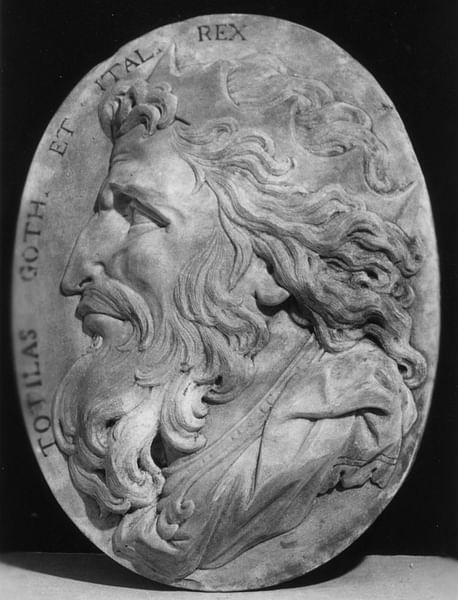
Rome was taken, and Totila offered Justinian I terms: he could either call off the war and leave Totila alone or Totila would murder the senators he held captive and destroy the city. Belisarius (whether by order of Justinian I or on his own initiative) wrote Totila a letter explaining the impossibility of his demands and the folly of his plan. Totila could not rule Italy, Belisarius explained, because it belonged to the Byzantine Empire and Justinian I was not interested in surrendering it. Further, if Totila went ahead with his plan to destroy Rome, his name would forever be associated with its destruction. As things stood at the present, Totila was regarded highly as a chivalrous adversary and merciful victor; if he destroyed Rome, however, his good name would be ruined.
Totila made the first and most significant mistake of the war in listening to Belisarius' advice and abandoning his plan. He left Rome as he had found it and marched on. Belisarius then occupied it, repaired its walls, and fortified it against any future attacks. Belisarius then engaged Totila a number of times until he was again recalled by Justinian I and replaced with the general Narses (l. c. 480-573 CE). Narses lacked the skill and refinement of Belisarius but was still a very competent leader. Totila was killed in the fighting at the Battle of Taginae in 552 CE, and his uprising was crushed utterly at the Battle of Mons Lactarius in 553 CE. Italy was again under the direct control of the Byzantine Empire.
Conclusion
Although the war continued under Totila's son, supported by the Franks who had been his allies, it was ultimately crushed by Narses. Later uprisings failed and, by 562 CE, the name 'Ostrogoth' had disappeared and a significant number of the population dispersed themselves into France and Germany. With the land depopulated and ravaged by 18 years of war, the Lombards, another Germanic tribe, easily conquered northern Italy in 568 CE under their king Alboin (r. 560-572 CE). The Ostrogoths still in Italy allied themselves with the Lombards.
The Lombards had previously been allies of the Eastern Roman Empire and had served in the imperial army against Totila. When they arrived as invaders, they found Italy largely deserted and were welcomed by the Ostrogoths, more or less, in the hope that they would restore the land. The Lombards, beginning under Alboin, did so and maintained the Lombard Kingdom for the next 200 years. The cultures of the Lombards, Romans, and Ostrogoths gradually assimilated to become the people of Italy.
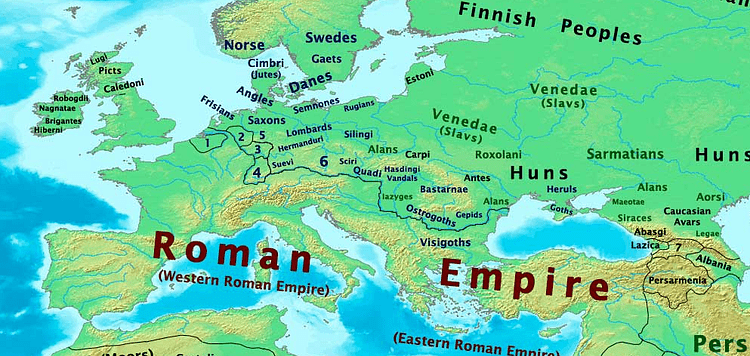
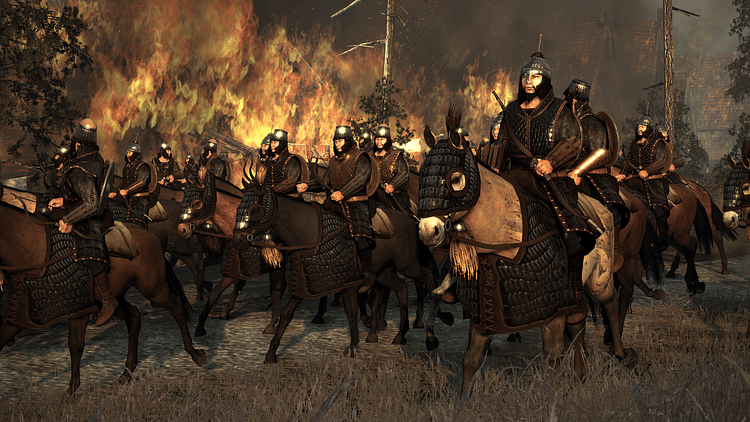
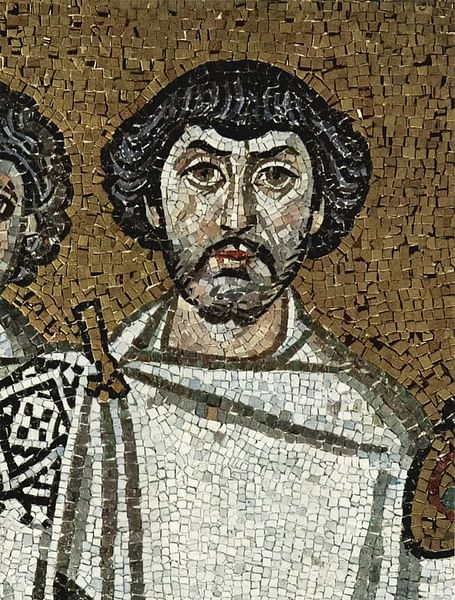


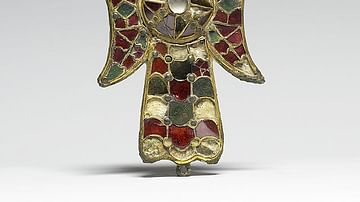


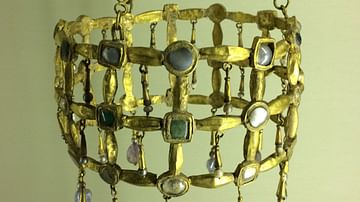

![Gothic History of Jordanes by Jordanes. (Evolution Publishing,2006) [Paperback]](https://m.media-amazon.com/images/I/51NcJhSFSXL._SL160_.jpg)


